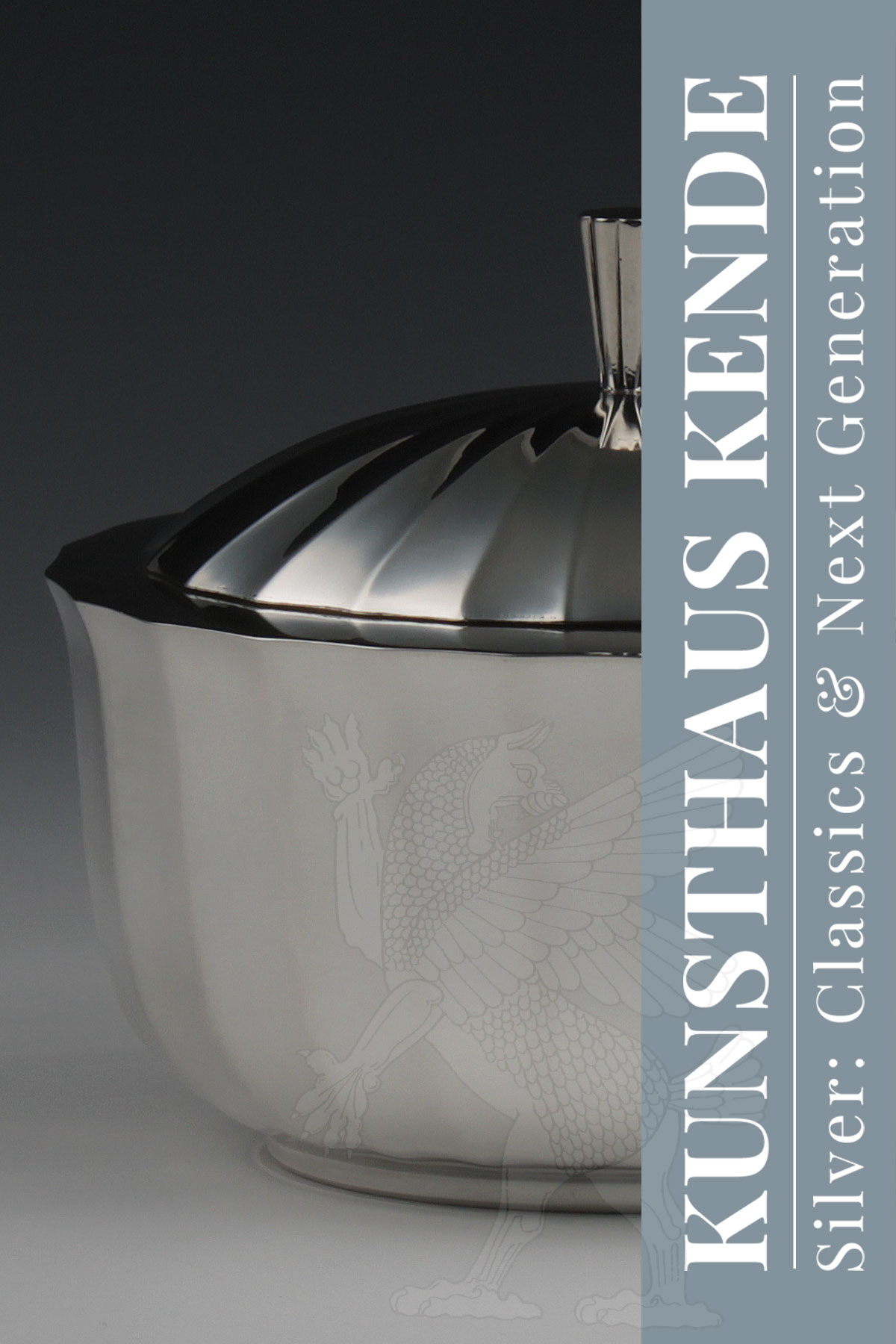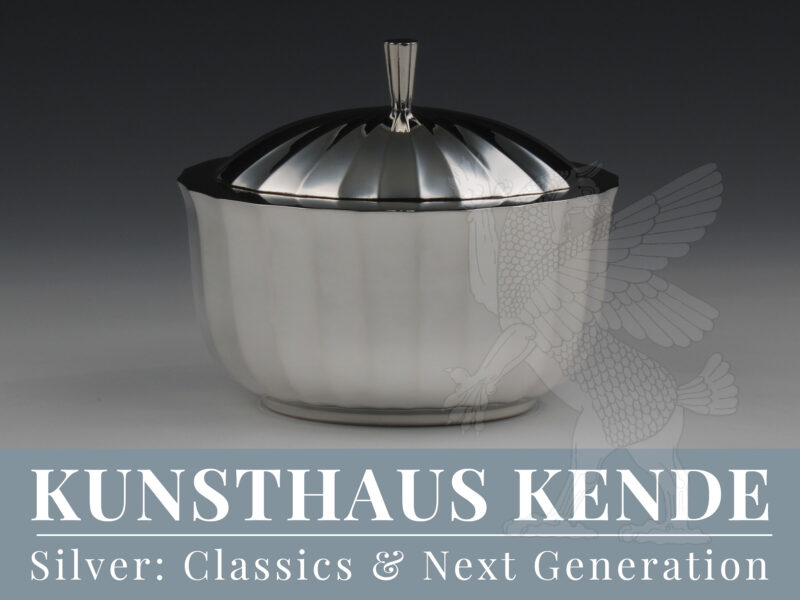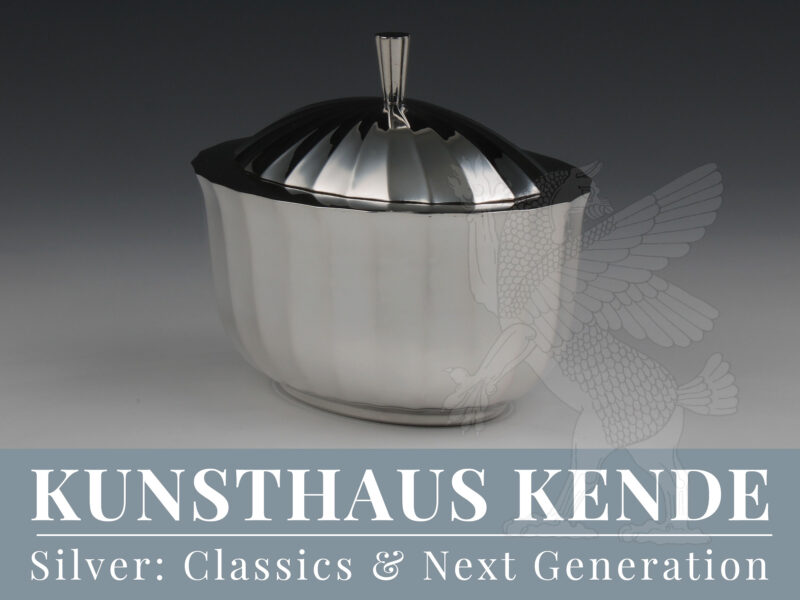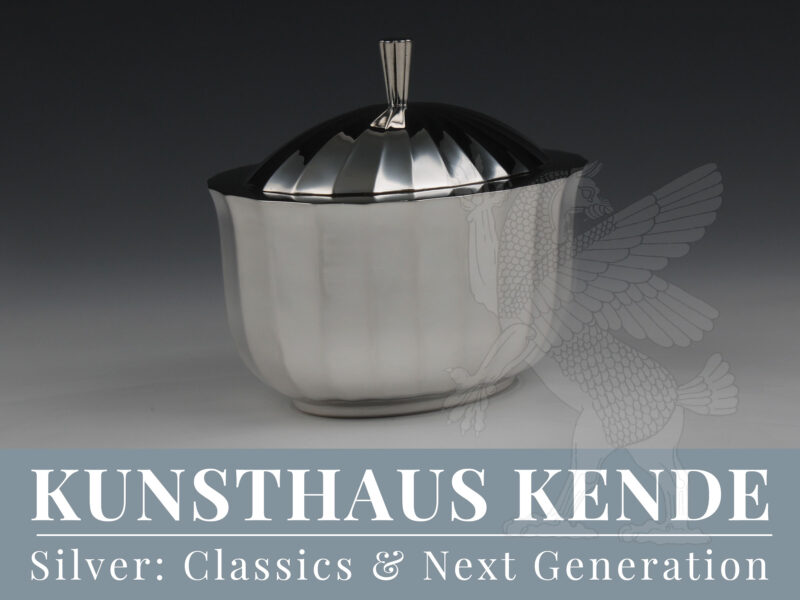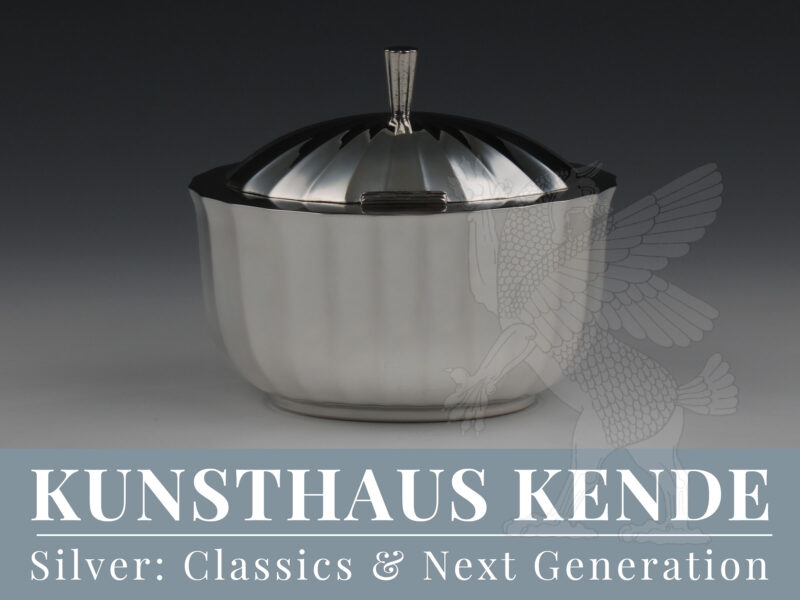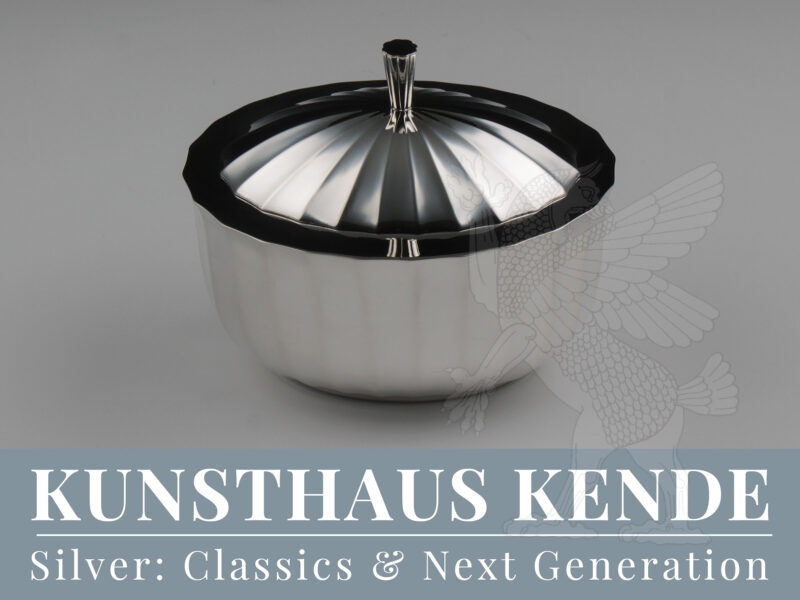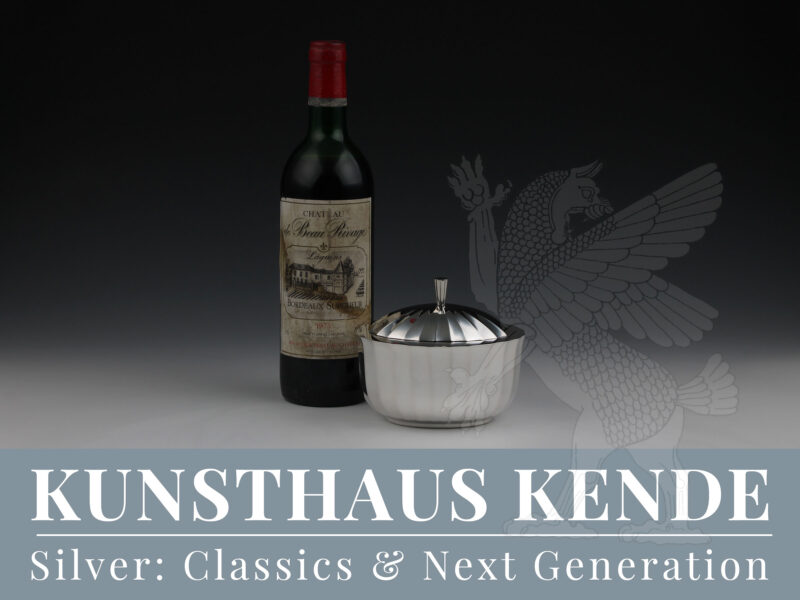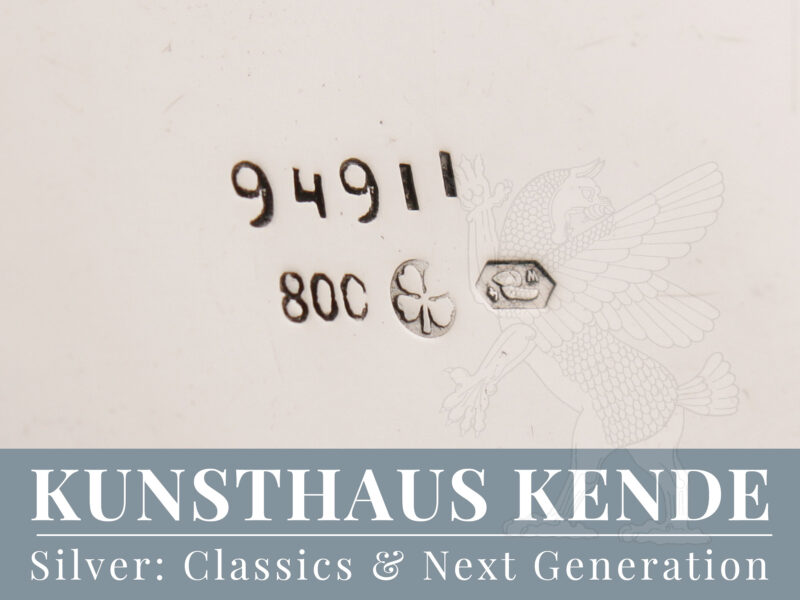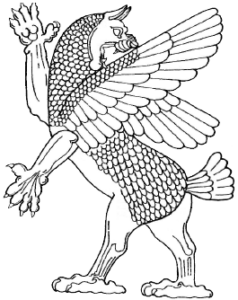Item number: 59058
Art Déco silver lidded box,
Vienna 1925 Otto Prutscher for Alexander Sturm (attributed)
Oval shape, the body divided into facets and tapering gracefully towards the base. The horizontal, smooth shoulder merging into the faceted lid analogous to the body which is crowned by an elongated, wedge-shaped knob.
A highly elegant lidded box in the reduced and very subtly ornamented design being characteristic of Otto Prutscher.
13.3 cm / 5.23″ length, 10.6 cm / 4.17″ width, 11.2 cm / 4.40″ tall (including finial); 281.8 g / 7.03 oz
Otto Prutscher – Designer, Builder, Developer of Viennese Modernism
Alongside Josef Hoffmann, Koloman Moser and Dagobert Peche, Otto Prutscher (1880 – 1949) was the most multi-talented designer of Viennese Modernism.
Throughout his education, Prutscher was focused on constantly expanding his knowledge of materiality in practice. In 1897 he began his studies at the Vienna School of Applied Arts and used his time off from lectures to train as a bricklayer and to gain experience in furniture making in his father’s carpenter’s workshop. Of his teachers at the Kunstgewerbeschule, the painter Franz Matsch and the architect Josef Hoffmann were to have the greatest influence on Prutscher’s artistic development.
Otto Prutscher’s abundance of ideas and versatility was comparable to that of Josef Hoffmann. His wide-ranging oeuvre includes architectural designs and executed buildings for private individuals and the public, individual pieces of furniture and complete furnishings, and a multitude of objects of daily use made of glass or silver. Like Josef Hoffmann, he was a passionate advocate of the Gesamtkunstwerk (total work of art): artistically designed utilitarian objects that combine aesthetics with practicality to enable people to experience art in everyday life. Alongside Hoffmann, Prutscher is therefore regarded as the most important representative of a movement which today is subsumed under the term Viennese Modernism.
Otto Prutscher was a member of all important artistic institutions – from the Secession to the Wiener Werkstätte and the Deutscher Werkbund. He taught at the Imperial and Royal School of Applied Arts in Vienna from 1909 until the negative influences of National Socialism also affected the Austrian art scene: Otto Prutscher had to resign from his post in 1939 because of his wife’s Jewish origins.
Otto Prutscher’s designs were implemented by a number of important companies, the most important of which in the field of silverware being the Wiener Werkstätte, Klinkosch and Alexander Sturm.
Although the authorship of the design for the lidded box presented here cannot be clearly proven, we nevertheless classify it as Prutscher’s design. The drawing quality of the design, the skilful play with the light reflections of the finely faceted wall, the tapering of the body towards the base, which is typical of his designs, as well as the wedge-shaped and elongated lid knob are elements that can also be found in other works produced by Alexander Sturm which are clearly attributed to Otto Prutscher.

